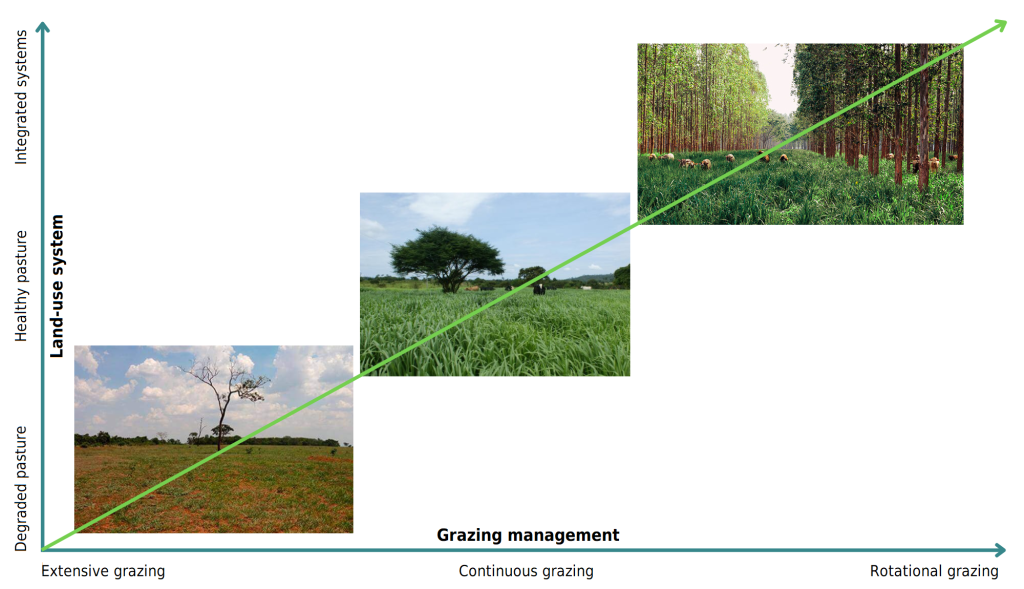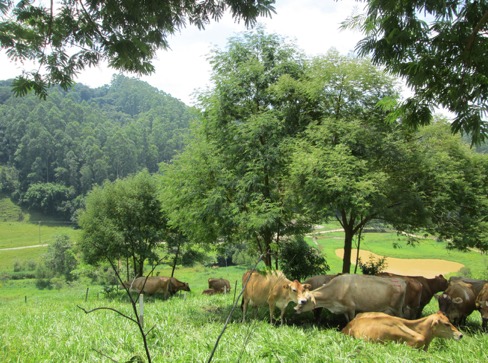Rev. Bras. Ciênc. Solo.2024;48:e0230121.
Carbon sequestration potential of pastures in Southern Brazil: A systematic review
31/May/2024
DOI: 10.36783/18069657rbcs20230121
Graphical Abstract

Highlights
Managed pastures can sequester ~2.50 Mg C ha-1 yr-1 for periods of around 20 years.
About 40 Mha of pastures managed for 20 years are needed to sequester 1 ppm of CO2.
Mitigating climate change requires the adoption of a varied range of solutions.
ABSTRACT
Since the industrial revolution, human activities have emitted approximately 2,500 Gt of CO2, increasing the concentration of atmospheric CO2 by 50 % compared to pre-industrial levels. To better understand the potential for mitigating greenhouse gas (GHG) emissions through proper management of degraded pasture areas, we conducted a systematic literature review and identified 23 publications reporting carbon sequestration values for pastures managed under different conditions in the south and southeast regions of Brazil. From this dataset, 17 publications considered to be in line with the research premises were selected to estimate the potential for soil carbon sequestration (SEQ) through pasture recovery in the southern region of Brazil, using conservative and regenerative agricultural management practices. Results show that managed pastures can sustain carbon sequestration rates of around 2.50 Mg C ha-1 yr-1 over approximately 20 years. However, due to the numerous variables influencing SEQ rates, the limited number of publications, and the lack of data for some variables among them, a more extensive analysis of publications and data is needed to establish causal and preponderance relationships regarding the effect of each variable on the found SEQ rates. Under current pasture occupation conditions in Brazil’s south region, it is estimated these areas could sequester between 0.433 and 1.273 Gt CO2 at the end of 20 years if managed under appropriate practices. These numbers are not representative to reduce atmospheric CO2 concentration from legacy emissions and significantly mitigate physical impacts of climate change, reinforcing the importance of prioritizing the reduction of global GHG emissions as the primary mitigation strategy. On the other hand, from the perspective of mitigating the national agricultural sector’s annual GHG emissions, this potential cannot be considered negligible. Carbon sequestration by soils under agricultural management can play a vital role in mitigating climate change, integrating the set of necessary solutions and actions for a Paris Agreement goals compatible trajectory of limiting global warming to between 1.5 and 2 °C by the end of the century.
981

